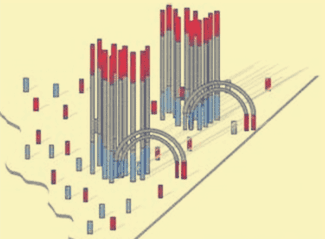Nowadays, the direct sequencing of PCR products has already played a significant role in molecular biology and genomics research. Such sequencing is widely applied to the detection of gene mutation, diagnosis of genetic diseases, and polymorphism research of single nucleotide. Compared with traditional clone sequencing, direct sequencing of PCR products conducts sequencing towards the amplified DNA directly, which eliminates time-consuming cloning procedures and avoids the traditional repetitive operations like extraction of template. In this way, the correct DNA sequence information can be received from a small number of original samples. Direct sequencing of PCR products are equipped with the following advantages: fast, convenient, simple, and stable.
Then, below are the test reagents.
1. Amplified double-stranded DNA template of PCR
2. DNA primers with the length of 20 nucleotides
3. DNA polymerase
4. Sequencing gel
5. 0.1mol/L DDT
6. α-32P-DATP
7. DNTP/DDNTP mixture (80μmol/L/8μmol/L)
8. DNTP (DCTP, DGTP, DTTP-0.75μmol/L for each item)
9. Sequencing reaction buffer: 40mmol/L Tris-HCl (pH7.5), 20mmol/L MgCl2, 50mmol/L NaCl
10. Stop buffer: 95% (formamide), 20mmol / L EDTA, 0.05% (bromophenol blue), 0.05% (xylene nitrile)
Test procedure:
1. Add 2.5μl of DNTP / DDNTP mixture into four microcentrifuge tubes (amount is for each microcentrifuge tube). The mixture should be incubated at 37ºC for 5 min to alternate.
2. Add 1pmol amplified double-stranded DNA of PCR, 10pmol sequencing primer, 2μl 5×sequencing buffer, and double-distilled water into an empty microcentrifuge tube with a total volume of 10μl, then it should be heated at 96ºC for 8 min and ice cooled for 1 min (centrifugal 10s at 4ºC in 10000g).
3. Add 2μl prechilled marked mixture (DCTP, DGTP, DTTP-0.75μmol/L for each item), 5μCi α-32P-DATP, 1μl 0.1mol / L DDT, 2U sequenase, and water to the total amount of 15μl. Place it on the ice for 2 min after mixing it and label newly synthesized DNA strand.
4. Add 3.5μl marked reactive mixture into the four tubes in the first step (for each tube). It should be incubated at 37ºC for 5 min. Then each tube should be added 4μl termination.
5. Samples should be thermal denaturation for 5 min at 80ºC’ water, next 2μl should be added to the sequencing gel for each lane, and then these fragments are separated by electrophoresis.
Notes:
1.PCR products should have a certain length (>200bp), because the accuracy of the electrophoretic peak figure around 20-30bp is low.
2.If the amplified specificity were high, it could be purified through phenol directly: chloroform extraction and ethanol precipitation.
3.The design principles of sequencing primer is similar to the primer design of PCR which could take about 20 nucleotides as primers. After the purification, it can be used as a sequencing primer.
To be brief, the direct sequencing of PCR products should be payed more attention for its various benefits such as its accuracy in sequencing. Whereas, during the test procedure, the conductors should be cautious about the products as well. All in all, such technology will embrace a brighter future!


 Sample Submission Guidelines
Sample Submission Guidelines
